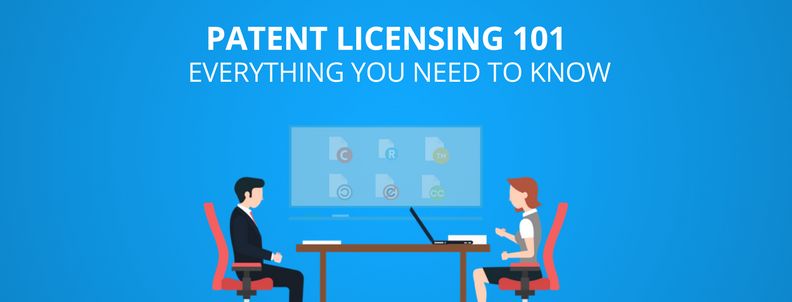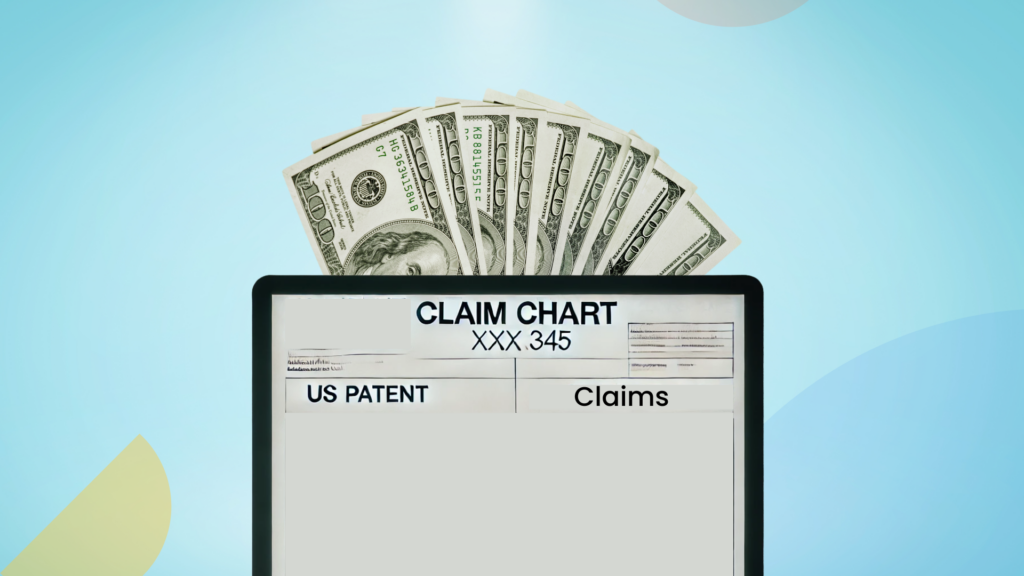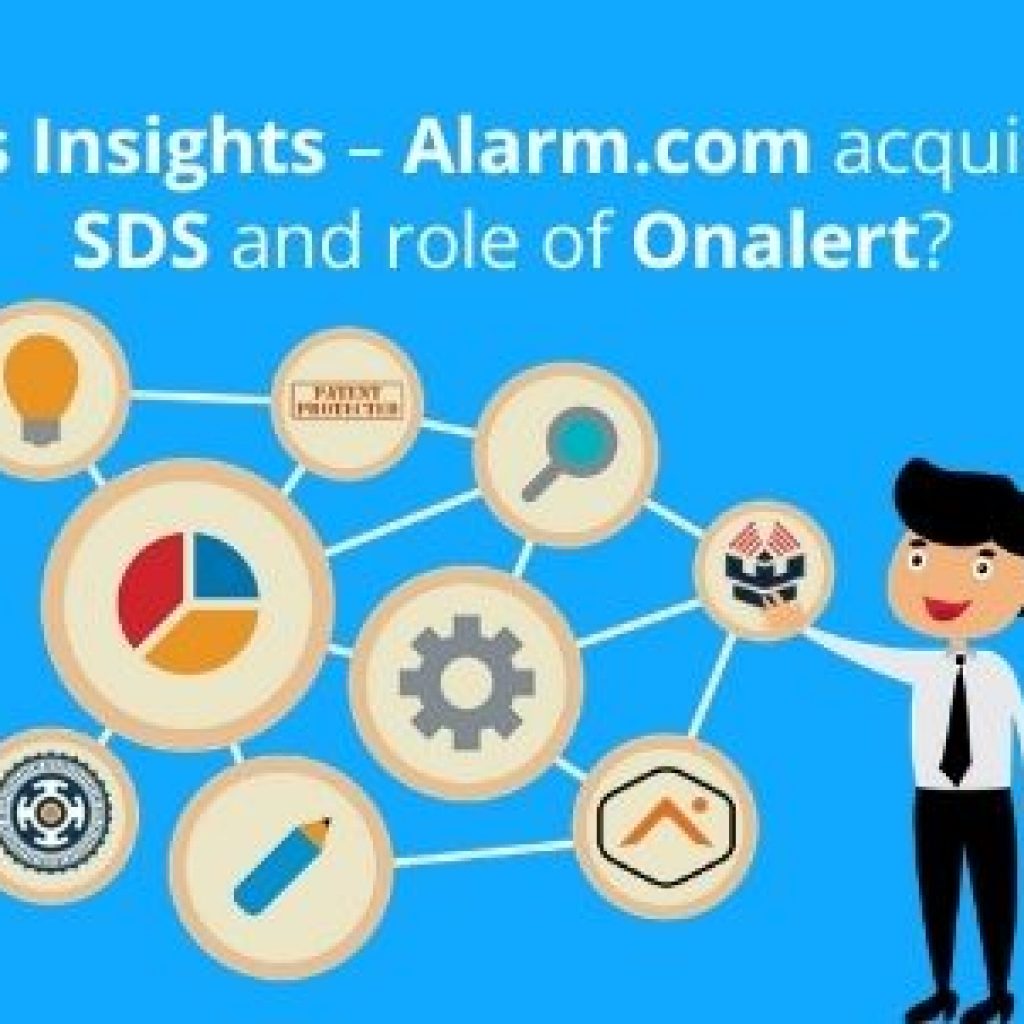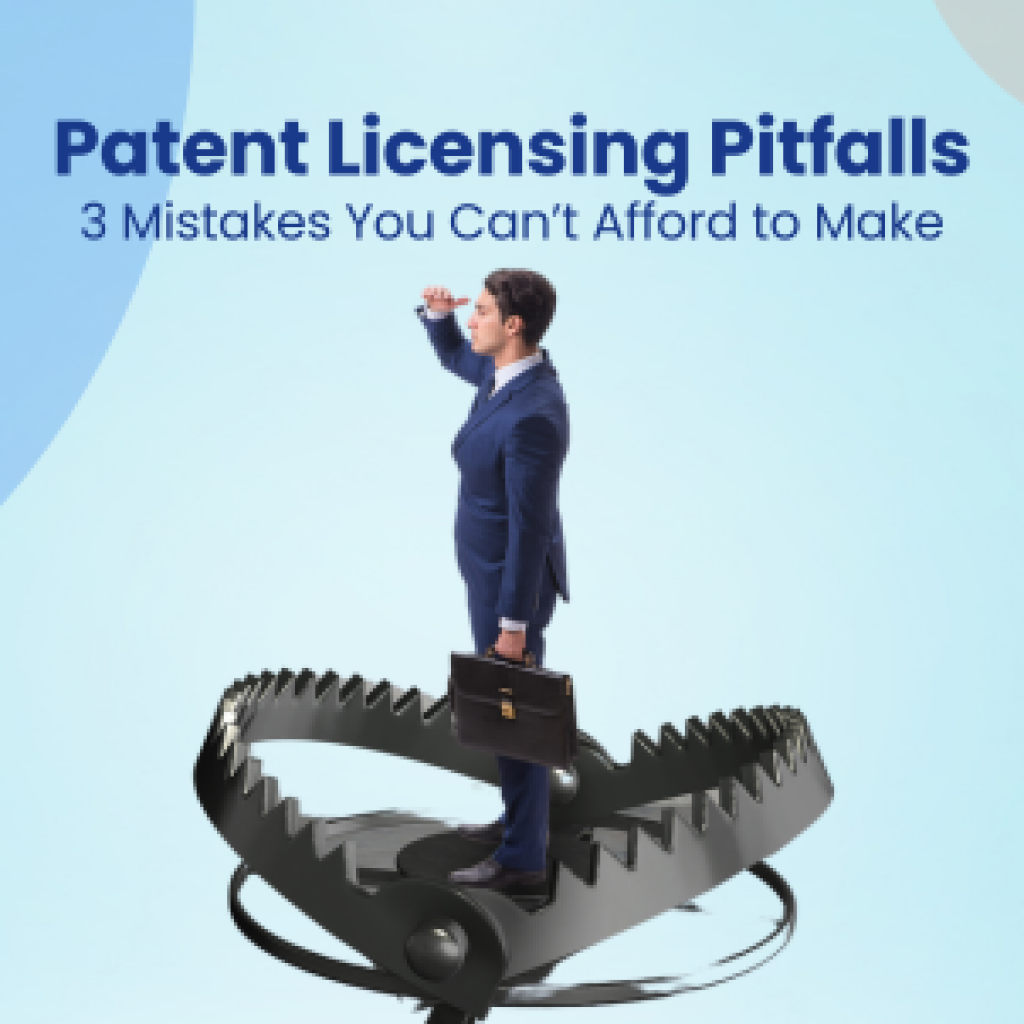Bringing a new product or invention to the market is not an easy job. It is a time-consuming process and the work starts from the day you had your eureka moment. Filing a patent to protect your invention, and then moving from the planning stage to manufacturing involves a lot of hurdles.
Even getting a patent is a work in itself. The process is quite vast and costly, and once your patent is granted, the next step is to commercialize it to reap the benefit from your patents. Though there are multiple ways to commercialize your patents, we have covered a few of the major ones in detail here:
Patent can contribute a crucial role in sharpening your competitive edge in the market. But often, decision-makers get overwhelmed by the cost and complexity involved in building a patent program for their business and maintaining the patent portfolio after that. In case if you’re also in a position where you need to build a patent strategy for your business, I have a webinar that you must join.
In this webinar, Tom Franklin, a seasoned patent attorney with 25 years of experience in building and managing portfolios shared how you can build a winning patent strategy for your organization and do so without crushing your budget or time.
To give you a sneak peek, here’s Tom sharing why patents are important for your business:
Tom also shared how to determine the goal of patents for your company, the actual costs involved in getting a patent, and how to choose the right counsel to work with. You can watch the full webinar by clicking here – Building and Managing Your Patent Portfolio.
In this article, we will be giving you an overview of how you can use patent licensing to make money from your patents. We will take a deep dive into the topic and explore various types of licenses that exist and have a brief look at each of them. That is not it. We would also be exploring the benefits of patent licensing and things to take care of before going ahead with the licensing process.
By the time you read the last sentence of this article, you will have an understanding of the following topics:
What Is Patent Licensing?
Patent Licensing refers to the act of assigning the ownership of a patent to a third party such that s/he can make, use, and sell your invention either exclusively or non-exclusively, for an amount of pre-decided royalties.
In other terms licensing a patent is a mutual agreement between individual or companies or a company which you choose to make, use, and sell your product in the market. As you are the patent holder, your ownership retains in the invention and you enjoy royalty payment on the product.
It is always best to license your patent to a company that is one of the top players/which has captured market interest already in the domain of your invention. In that way, your patent would fit the product/IP gap.
Pro Tip: While licensing the product, do research about the licensee and contact inventors’ organizations such as the United Inventors Association. This is a safety practice that you should undertake because if by any chance your relationship with the licensee gets spoiled, you can take further necessary steps with their help.
What to know before License a Patent?
Before you decide to license your patent, it is a good practice to ask oneself the following questions:
- Do you have the capital to invest or licensing will be a better option?
- If you choose to license a patent, will you choose individuals or companies for it?
- If selling the patent is an option, would you consider it? How important is it to you to maintain the rights of the patent?
Once these questions are answered, you would have a clear framework and could go ahead with further steps. You would have an idea of what exactly are your options (manufacture, license, or sell), your potential licensees and whether you’d be assigning licenses to third parties exclusively or not.
A lot of companies have made a ton of money by merely strategically licensing their patents. NuCurrent, a wireless charging startup, for instance, earns millions of dollars by licensing its patents to the likes of Apple and Motorola that use their patents in their products. They even recently sued Samsung for infringing their patents related to wireless charging. We conducted a preliminary analysis to assess the strength of their patent which you can read from here. Another innovative giant, the big blue, known to the world like IBM, is one of the largest patent licensors in the world, reportedly earning billions in-licensing and sale of its patent portfolio.
Royal royalties, huh!
Speaking of it, the royalty rate of a patent can vary from five percent to twenty percent depending on the licensee.
While we’re still talking about licensors, it would be unfair to not mention ARM Holdings PLC. The company designs a series of inter-related intellectual property (IP), including microprocessors, Physical IP, and supporting software and tools. Reportedly, ARM’s entire revenue- which exceeds a billion dollars – comes from licensing its patents.
A solid business model, licensing!
Now that we are aware of what patent licensing is, let’s have a look at various types of patent licenses and how they differ from each other.
8 Types Of Patent Licenses
There are eight types of patent licenses:
Exclusive License
In an Exclusive License, there is the transfer of ownership by the patent holder. The only thing which the owner has is the title. This is just like stepping into the shoes of the patent owner and acquiring all the responsibility for it. The only thing which the licensee cannot do is that they cannot license the patent to anyone else. It is exclusively granted to her/him and s/he cannot further license it to anybody else.
Non-exclusive License
In this contract, the license for the patent can be granted to more than one party, and all of them can maintain control over it and bring it to the market.
Sub Licenses
This is a process where the licensee has the right to issue a license to different organizations for the making of the product. In other words, the licensee has the right to giving the license further to a third party who has the advantage to create the product. However, the profits will be dependent on the contract between the primary licensee and third party.
Cross-Licensing
This is a process when there could be an exchange of licenses between different organizations and creators. This is required when the invention requires the support of other products to make its place in the market.
Compulsory License
A little complicated, and usually reserved for pharmaceutical patents, compulsory licensing is when the government allows someone else to practice your patented invention – even against the will of the patent owner – for a set amount of money. For a detailed explanation, click here.
Voluntary Licensing:
Also applicable for pharmaceutical patents, voluntary licenses are an act of goodwill towards the society.
In this scenario, Patent holders may at their discretion, license to other parties, on an exclusive or non-exclusive basis, the right to manufacture, import, and/or distribute a pharmaceutical product. Depending on the terms of the license, the licensee may act entirely or effectively as an agent of the patent holder; or the licensee may be free to set the terms of sale and distribution within a prescribed market or markets, contingent on payment of a royalty. Either option or arrangements in between would allow for substantial price reductions.
Carrot License
This licensing approach is suitable when the potential licensee is not in the practice of the patented invention and does not fall under any obligation to take a license. This kind of license is a marketing tactic where the patent owner gives the licensee a glimpse of what could be achieved by acquiring a license for their patent.
Something along the lines of “my patent technology is considerably great and by licensing it you can sell a number of products.” Or it can be, “our patented technology used is cheaper and the profits would be more if you license it”. In other words, it is simply a market practice in which you convince a prospective licensee to take a license.
Stick Licensing
Stick licensing is the complete contrast of carrot licensing. This approach of licensing can be used when the prospective licensee is already in use of your patented technology and, thereby, infringing your patent.
The proposition of value here states that “go for the license or else… (I will see you in court).” One actually should take care that the “carrot” license is really a “stick” license in the cover-up. After all, if there were no threat of litigation why would someone ever license a patent? Clever? Yes!
Now that we have an idea of the kind of licenses that exist, let us find out the pros and cons of licensing.
Why License Your Patent?
When you sell a patent to a big company, you might get a great financial reward for your invention but you’ll lose any future rights over it. Patent licensing can, hence, be an alternative to selling a patent.
Despite the obvious benefit of generating income, there are few more plus points of licensing your patent. Listed below are a few of them.
Licensing is an easy way to make your product available
Licensing is the most convenient and easy method to convert your product idea into reality, without having to invest any resources while ensuring a lifetime* of royalty.
Note: The lifetime refers to the lifetime of the patent, and not the person.
The stress of manufacturing cost vanishes for the licensor
There is no manufacturing cost or distribution cost for the inventor as the product is licensed to an individual or company. You actually become liability-free and enjoy royalty for the same.
Easy and quick launching of the product
For the launch of the product, there is a massive investment required. Even building a name in the market for a product takes years. When you go through an established source – that is by licensing your patent to a well-famed company – your product will enter the market in a faster and shorter time period.
Provides you with a competitive advantage
Launching a product in the market through an established source helps you to get a competitive advantage. If the unit is one of the biggest distributors then your product will capture a larger market and build its name which will be ultimately a benefit for you. This will not only fetch a lot of royalties but also make your name prominent in the leading inventors.
Easy to enter foreign markets
When we talk about capturing foreign markets, it is to be noted that it is not easy for an individual to single handily get into the big market. In this scenario, licensing will be a great option as they set up links with the firms which will help your product reach the broader horizon.
The benefits are multiple and this is an exhaustive list, so we would stop listing more. But we believe you have enough reasons now to license your patent. The next question that arises is – How?
How to license a patent?
Getting a licensee is not an easy job. For finding licensing opportunities you need to make your technology considerably available in the market so that people could get a clear concept of your invention.
It is always great to have expertise in the IP and technology domain which can fetch you the right source. If you don’t have the expertise, the best course of action is to hire an expert for the same, which will help you to avail good returns.
Whichever course you choose, here are a few ways one could use to find licensees for their patent.
Showcase your invention in the best sense possible
A company that is not in the same field as your technology can still opt for your patent. The reason is that the company gets attracted to the invention/patent you have created and it certainly shows them the profit zone which can be easily availed. No established company would take the license until they see some light of hope in your creation. Present your invention in a way that it grabs the attention of people.
Find the best patent licensing companies
Hiring a good patent brokerage can help you find good companies that could be potential candidates for the patent licensing agreement. It is to be noted that this should be done only if you are confident that your product has the potential to capture the market. Before you think about licensing the patent, just give a thought about the product and whether you are okay if your exclusivity is not maintained. This will clear your thought process.
After this make a list of the potential licensees. You will have a better vision for the companies and from that list, you can segregate the ones which you find compatible. To begin with, finding the respective companies, start with The Thomas Register of American Manufacturers or North American Industry Classification or NAICS. They are available on the internet and can make your work quite simpler.
Have a full-fledged market research
Doing market research is quite important before licensing. Find out the companies who are manufacturing a similar kind of product and check whether they wish to invest in the same field. Do consider large entities and see their willingness to get a license to your patent. Every company wants to get IP that could protect their invention and exclude others from manufacturing the same. If your patent is great enough, the Giants would want it too.
Reviewing and advertising
Reviewing the current publications of trade associations or trade shows, library databases, business directories, and patent databases will be a great help to get prior knowledge. You could also list the patent for licensing, on one of the patent marketplaces.
This list will help you find one – 23 marketplaces where you can buy and sell patents.
Find companies that are infringing on your patents
Once you find the right licensee, your job does not get over. Look out for the companies that are using the same kind of technology that is present in your patents. They might have used your technology without taking a license, which is not legal. As they are infringing on your patent rights, you need to take action against them.
It might be in the form of cease and desist letters or you could take them to the court of law to get royalties for infringing on your patents. You might offer them a license for a decided cost such that they could continue working on these patents, but with permission.
Patent infringements suits are very common and almost every corporation – big or small – engages in these suits. Think of the famous smartphone wars – Apple vs. Samsung or Nokia vs. Apple. The costs of these battles could go up in millions and even billions at times.
Billions? Yes.
A couple of years ago, the court awarded Merck & Co. 2.54 Billion USD, the largest in the history of US, when it was proved that Gilead Sciences infringed on a patent owned by Merck & Co.
Each lawsuit can cost millions. There are even chances of your patent getting invalidated under AIA. Just like the pros, the cons are many. Let’s have a look at some of them.
Before you go, what if I told you there is a perfect four-step process to license your patents or your entire patent portfolio for that matter. A sophisticated approach that would make licensing your patents a breeze. Want to know more? Click here – The Four-step process to Patent Licensing.
Things to Take Care Of While Licensing Patents
Risks and Limitation of licensing the patents
- Licensing could be less profitable too – Licensing the patent can be less profitable given that when you make the invention available in the market yourself you can achieve a high amount of profits. Though investing capital is a risk, but profits will be more than you expect.
- Dependent on the skills of the licensee – When you license your patent, your dependability will lie on the licensee as you will be dependent on his sources, his skills and the efforts he put in to make your product available in the market. Hence it is very important to choose the right licensee for bringing your innovation to the market.
- An agreement of licensing can be disadvantageous – If the working condition of the firm goes well and the agreement does not clearly state about royalty sharing and further processing it will be a loss to the inventor. Thus, while making an agreement all the terms and clauses should be clearly mentioned and a second reading should be done so that additions or subtractions could be done.
- The licensor can, in turn, be your competitor – For the people who opt for licensing, the licensee can cannibalize the sale of the licensor which may result in a loss to the licensor as he earns less from the royalty and the profits could be low.
- The additional requirement by the licensee – When you once grant the license to the licensee, in the start he may not ask for something but in later development, he may ask for some contributions in cash or even additional data which may be time-consuming or may even take your funds. This could be an expensive deal and a setback for the invention. So it is quite important that the agreement clearly states all the acts and later on, the licensee does not ask anything from the licensor. These clauses should be clearly mentioned.
Additional non-related tip
- Considerations while licensing out the invention – Specific considerations should be considered while licensing out the right to use the particular trademark. The main aim of the trademark is to differentiate between the goods and the service on one firm for the other kind. This will help in highlighting the source and making a particular reference to the set reputation and quality. Therefore it is very important that the trademark owner checks that the right quality is maintained by the licensee.
- It is very important that you maintain a patent right that is strong enough to stand litigation in case if you ever sue someone. That is, your patent should be strong enough to survive on the grounds of novelty and obviousness and not get invalidated upon further reexamination.
These are some of the limitations which actually comes your way when you opt for licensing of patents. You should keep them in mind so that these don’t become a hurdle in your way while licensing.
Conclusion
We discussed what patent licensing exactly is, its various kinds, and the benefits of going ahead with licensing and incurred risks. We also had a look at the ways you could use to go ahead with licensing your patent that is, finding a potential licensee.
While we covered everything about the topic, it should be noted that your chances of licensing your patent totally depends on your patent itself. No matter how much you spend on marketing it, if it ain’t good enough to make someone else a lot of money, it won’t make you any money either.
Hence, it is very important that you get a simplified patent licensing strategy to help you out with licensing your patents. In case you are wondering how to make such a strategy, we have one post for you: Patent Licensing Strategy: A 4-step process to license your patent
To better profits!









